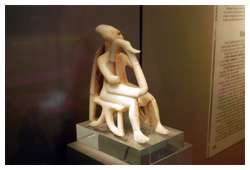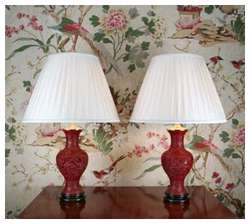|
Lifestyle -
Arts and Culture
|
|
Written by Administrator
|
|
 Cycladic sculptures are thousands of years old and yet look eerily modern. A face with no facial features, except the nose, is not exactly how we think of ancient Greek art. Cycladic art came to prominence during the twentieth century. Unfortunately that started a period of looting, which destroyed the possibility of putting the sculptures in any kind of location or archeological context. To this day we know very little about Cycladic art. A measure of its growing importance is the existence of the Cycladic Museum located in the heart of Athens, Greece. Cycladic sculptures are thousands of years old and yet look eerily modern. A face with no facial features, except the nose, is not exactly how we think of ancient Greek art. Cycladic art came to prominence during the twentieth century. Unfortunately that started a period of looting, which destroyed the possibility of putting the sculptures in any kind of location or archeological context. To this day we know very little about Cycladic art. A measure of its growing importance is the existence of the Cycladic Museum located in the heart of Athens, Greece.
The Greek islands of the Cyclades are located to the South East of Greece and to the North of Crete in the Aegean Sea. There are more than two hundred islands approximating a circle around the most significant island Delos, the birthplace of Apollo, Greek God of music and light from Greek mythology and of Artemis, the huntress. The Greek name for the Cyclades is Kyklades, an obvious reference to a circle...
|
|
Lifestyle -
Arts and Culture
|
|
Written by Administrator
|
|
 In our modern world, glass is an every day part of life, but this was not always so. In our modern world, glass is an every day part of life, but this was not always so.
The elegant and ethereal medium known as “glass” is simply and basically made of sand, and or, silica and a flux; sodium or potassium. These elements fuse together when melted at a very high temperature, resulting in the product readily recognised as glass.
Glass is an ancient invention, having been produced for the past 5000 years and particularly since the development of techniques in the 18th century. The first glass makers were found in ancient Egypt and Mesopotamia, 5000 years ago with examples of this early glass surviving today. At the time, it was seen as a very exotic product and study has shown that the simple techniques used were held as secret by those ancient artisans.
The first glass products were rather crude bottles and flasks, produced by moulding the basic shape from mud. The modelled shape was held by inserting a short metal rod into one end with the shape then dipped into molten glass thus forming the "core" of the flask shape. Long molten threads of glass, known as "canes", were then wound around this basic shape until the flask or bottle was complete...
|
|
|
<< Start < Prev 21 22 23 24 25 26 Next > End >>
|
|
Page 26 of 26 |


 Dyscario Feed
Dyscario Feed